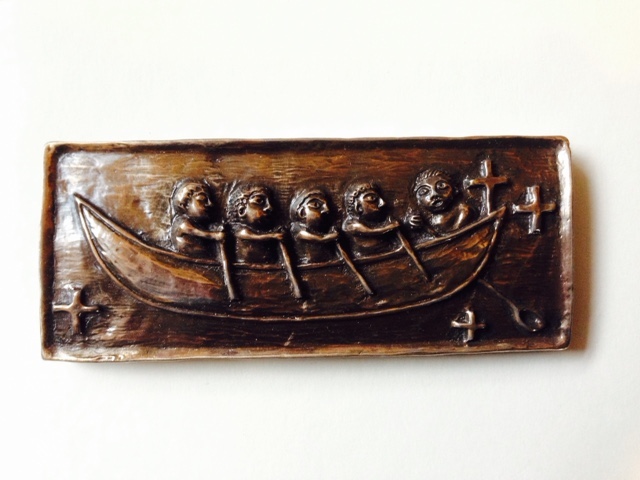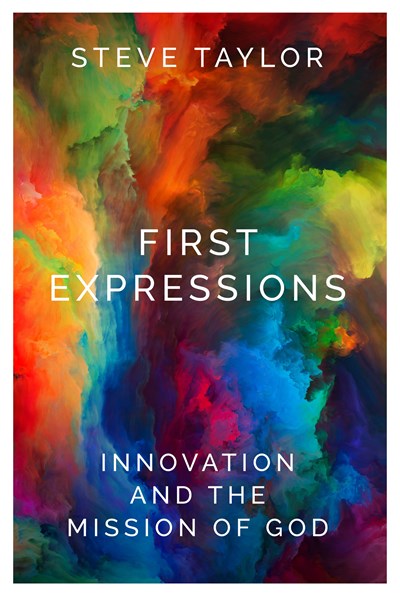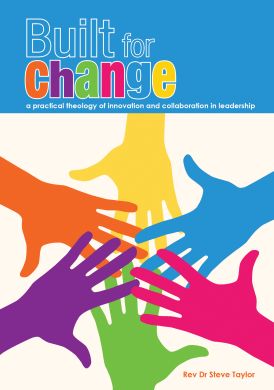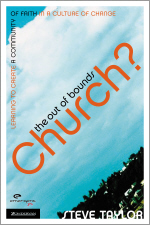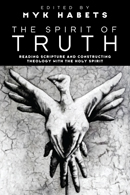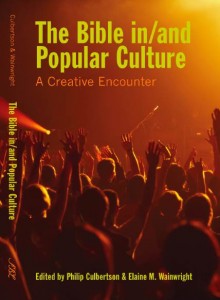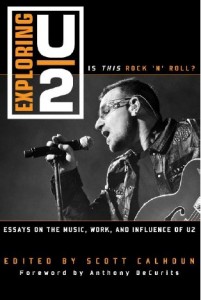Monday, July 24, 2023
Retrieving practical theology from the archives paper proposal
Glad to submit a conference paper proposal for Association of Practical Theology in Oceania (APTO). It’s in Dunedin in 2023 so nice and close to home! The conference theme – migration – gives me the opportunity to offer some research emerging from my Race, justice and mission project, thanks to my upcoming University of Glasgow Library Research Fellowship.
Retrieving practical theology from the archives: a reassessment of race and justice in Oceania migration
In the academic study of lived experience, practical theology often draws on empirical research. However, practical theology’s engagement with lived experience, as presented in archival material, is less common. The Glasgow University Library and University Archives hold a unique repository of pamphlets, sermons, reports and minutes. The archives include accounts of how Scottish missionaries experienced “blackbirding,” a coercive approach to migrant labour in Oceanic history. How might these historical accounts of lived experience help us analyse race and justice in the practices of mission?
This paper considers three methodological approaches by which practical theology might research migration histories in Oceania. First, McDougall (2016) used oral histories retrieved through ethnography to outline a distinctive cosmopolitan openness that shaped migration amongst the Melanesian peoples of the Solomon Islands. Second, Modjeska (2014) used embodied imaginaries and drew the work of historians and anthropologists into a “fictive” narrative that asserted indigenous Melanesian agency. Third, Halapua (2001) wove documentary analysis, interviews and action research in seeking to sing God’s song of solidarity with marginalised Melanesians in Fiji.
These three Oceanic methodologies provide ways first to approach archival history as lived experience and second to reflect on race and justice in the practices of Christian mission.
Friday, July 21, 2023
write-streams for AngelWings Ltd
 On the AngelWings Ltd work desk sits my current writing map. I have 2 empirical research projects that are due to industry stakeholders in the next 2 weeks. They involve a lot of data – together amounting to 76 interviews and focus groups, along with 120 survey responses. All collected over the last 11 weeks.
On the AngelWings Ltd work desk sits my current writing map. I have 2 empirical research projects that are due to industry stakeholders in the next 2 weeks. They involve a lot of data – together amounting to 76 interviews and focus groups, along with 120 survey responses. All collected over the last 11 weeks.
One of the projects has the joy of working with a team, so the writing and editing are shared. But others in the team have other workstreams. So a daily writing map is needed to apportion time and keep projects moving.
Around the writing map are my ending symbols. In ending every research project, I find a symbol expressing the project’s uniqueness. They watch me as I work. “You’ve done this before – juggled, drafted, edited.” They give me confidence.
And hope.
Because soon, there will be time to choose another ending symbol. Or, in this case, two!
Sunday, July 02, 2023
Listening matters
Listening matters.
I’m now well into two AngelWings Ltd research projects for organisations in Australia. 45 interviews and focus groups for one. 24 interviews and focus groups for the other.
This is hours and hours of information. Each interview is distinct, packed with quotes and unique insights. I use a range of processes to ensure I listen carefully to every conversation’s unique and rich nature.
1 – A consent form, sent prior to clarify expectations as we start.
2 – An interview schedule to keep track of time and help with consistency.
3 – A research journal to record notes.
4 – A highlighter for key moments and insights as I listen.
5 – A short research memo was written to myself as I finish each interview to record my impressions and observations.
6 – A listening back to the recording and writing of a summary.
7 – The sending of a summary to each participant, so they know what I’m hearing and can give further feedback if they need to.
These seven listening processes all help when I come to write a report. Each conversation is honoured. Participants know what has been heard. My developing thoughts, feelings and intuitions are data to enrich the discernment.
Friday, June 09, 2023
AngelWings Review of Missional Needs and Opportunities for Synod South Australia
A piece of research I’m part of doing with AngelWings Ltd has been written up in New Times, the online magazine of the Uniting Church Synod of South Australia (New Times – April/May 2023).
The Murray River mouth is one of the more dramatic places in South Australia to consider transitions. Upstream floods create new channels, while drought increases pressure on fish and migratory wading birds flying in from Alaska. Those living near the river mouth and close to the Coorong know things constantly change.
Aware of constant change, the Mission and Leadership Development Board has commissioned a Missional Review of Needs and Opportunities. The review seeks to clarify missional priorities, develop creative options and to identify threats, and is being undertaken by AngelWings Ltd, a New Zealand organisation. The three researchers – Steve Taylor, Lynne Taylor and Kayli Taylor – bring different professional skills to the mix.
They also share experience having lived in Adelaide and been among the Uniting Church in South Australia between 2010 and 2015. One special family memory was watching Narrandjerri elder Uncle Tom Trevorrow dig into the sand at the Murray Mouth. The water Uncle Tom offered was fresh, not salted. It was a powerful experience of how water exists in surprising places.
Those serving in Christian ministry today face shifting pressures and new opportunities in offering Christ’s Living Waters (John 4). The global pandemic has opened new channels for connection yet generated increased pressures on local communities seeking to nurture faith and express God’s love.
Over thirteen weeks between May and July, the review will seek to understand these needs and opportunities. There will be many different ways to engage:
- Lunchtime conversations during the Synod meeting, 22nd-24th June
- Listening through focus groups with Presbyteries and Synod
- 1:1 conversations with existing Mission Resourcing staff
- Investigating new approaches to mission resourcing beyond South Australia
- A Synod-wide online survey of missional needs
- An online survey of how Ministers stay up-to-date in mission thinking
- A snapshot of resourcing being currently promoted in local congregations.
To receive weekly updates, please connect to the online website located at here.
It’s so good to be reconnecting with a part of the church I served between 2010 and 2015 and to be offering a diverse range of research strategies to offer missional clarity.
Wednesday, May 31, 2023
Art at creation’s extinction
The Art of Creation looks so interesting – interdisciplinary and what a fantastic location in which to think theologically.
So in response to the call for papers, I have really enjoyed proposing a paper. I love how working visually opens such different ways of thinking and being. My proposed paper is titled Art at creation’s extinction: Ecological theologies in Ruysch’s Flowers in a Vase and Regan O’Callaghan’s St Paul and the Huia.
My proposed paper will work with Ruysch’s Flowers in a Vase, an artwork at the National Gallery in London and in dialogue with Regan O’Callaghan’s St Paul and the Huia at the Gallery’s neighbour, St Paul’s Cathedral.
Monday, May 22, 2023
The rich uniqueness of Scent in Lent 2023
Scent in Lent 2023 was a first, as strangers gathered online to smell the pages of Scripture. Like wine tasting, inhaling a deep, long breath of Scripture created new connections, revealed hidden flavours and brought the Bible alive.
Some of the aromas, like tears, shed outside the grave of Lazarus, are subtle. Other odours are strong, like the pungent smell of leather making or the heady scent of perfume wiped into dirty feet. Whether subtle or strong, these aromas invite us on spiritual journeys.
Held over six weeks in March 2023, Scent in Lent offered an online experience of spiritual practice. Hosted by Steve Taylor, Director AngelWings Ltd, each gathering invited the smelling of Scripture, sharing experiences and joining in participatory prayer.
Scent in Lent 2023 created new connections. Participants began as strangers, registering from 6 different towns and cities. Even though participants never physically met, memories of childhood smell quickly created connections and built community.
Hidden flavours emerged as participants explored the sense of smell in further individual activity. Each online session ended with practical suggestions for the following week. Some participants asked family members to brainstorm “smelly” Bible passages and, amid the laughter, experienced deeper spiritual connections across generations. Other participants smelt their streets or a nearby drain after rain. Together each realised how a small act like picking up rubbish could change the aroma of their community.
Scent in Lent 2023 made Scripture come alive. The pages of Scripture are packed with pungent aromas, and participants loved the idea of “sense-gesis.” Exegesis is defined as the interpretation of a text. Attention to the senses, particularly smell, provokes different questions in interpreting familiar texts.
Each week a Bible passage was read three times. In between each reading, participants breathed the passage deeply, then shared the aromas of Christian witness they sensed in the pages of Scripture. As participants grew in confidence with sense-egesis, they began to identify similar scents in other Scripture passages. “The insights were extraordinary,” observed Steve Taylor. “For one participant, the smell of river water, as Paul preached in Philippi, connected with crossing the Jordan. People were excited to read the Bible more closely.”
It is tempting to stereotype online learning as “dis-embodied.” Yet sharing sensory experiences demonstrated the rich potential of online spiritual practice, and the practical explorations grounded the online gatherings in local and community care.
The feedback from Scent in Lent 2023 participants was overwhelmingly positive. “A refreshingly different and convenient spiritual pathway to investigate,” wrote one. Another appreciated how “Scent in Lent helped the narrative of scripture come alive for me again.” A third observed that Scent in Lent 2023 was “a course that lingers in the spiritual air of your life far longer than you might expect!
These comments have encouraged the planning for next year. Scent in Lent 2024 will offer the same course at different times to connect with people from multiple time zones. If you want to learn more, contact Steve Taylor, AngelWings Ltd.
Wednesday, May 03, 2023
an AngelWings Ltd research s/ending: kawakawa chyrsalis and kāhui whetū in 2023
How do you mark an ending?
A few weeks ago, a long and demanding research project came to a s/ending. I hit “send” on a 54,000-word research report, along with four executive summaries, each six pages long. Like any s/ending, the lead up to the deadline involved stress, the juggle of depth and readability, edits and visual appeal.
Once sent, another set of stresses emerge. How will the funders respond? The time between sending the report and gaining feedback can be lengthy. Funders need time to read and process. Can I move on, or will more work be needed?
In all this waiting, the sending is still an ending and the s/ending needs celebrating.
What was sent a few weeks ago was a unique project. First, at 26 months it was longer than usual. The report drew on hundreds of interviews and interactions, and over 250 pages of written notes.
Second, it was a research collaboration, working with someone who brought unique and different skills. So this research project meant forming a team, learning to work across cultures, appreciating each other’s strengths, navigating each other’s weaknesses and respecting each other’s realities. With research spread over 26 months during a global pandemic, the realities included lockdowns, catching of Covid during fieldwork, work and family changes. Lots to navigate! So with the sending came an ending, of a productive collaboration.
So as part of s/ending, last week over coffee, we exchanged gifts as we prepared to meet the funders. Here are both gifts, sitting on top of the four research journals full of notes and findings from the 26 months of research.
My colleague found a beautiful pottery bowl. She was drawn to the stars (kāhui whetū). The research project had been shaped by an indigenous whakataukī (proverb) about the nature of voyaging. As part of our research, we had identified stars (kāhui whetū) that we suggested could guide the funders into the future. The pottery bowl, with stars, named this unique strand of the project.
I offered a pair of hand-crafted chrysalises of the kawakawa loop moth (Cleora scriptaria). The kawakawa plant is endemic to Aotearoa, the chrysalis is sign of potential. The research project had invited us to pay attention to land and place, to value indigenous learning in new ways. The six recommendations might offer potential new ways of living for this funders.
These objects now sit on my desk, along with other objects from other AngelWings Ltd research projects. Each object reminds me of work done. Each suggests a different dimension of the craft of researching. In this case, the value of working with indigenous ways of knowing. Each invites me to keep praying for the project, in this case, for those seeking to bring change in theological education and ministry training.
What about you? How do you mark an ending?
Saturday, April 22, 2023
body work, body listening
How do you listen to your body and its movements?
A day off today provided some time to process the week gone. A key task over this week was speaking for 90 minutes to a 53,000-word report I have written. The report drew together 26 months of research into the next 20 years of the organisation.
So there was a fair bit riding on the work – for myself, for my colleague in research and for the organisation.
Which meant lots of emotions and stress – before, during and after the presentation. Including some fairly vivid nightmares of missing data across a cultural interaction.
So the climb through my local piece of bush today was a chance to pay attention to my body. During the 60-minute walk-up, three questions emerged, each from different moments during the walk.
- Where were the resting places in the 26 months gone?
- Where were the moments of unexpected delight?
- Where were the feelings of relief?
After a sit with some chocolate at the top of the stairs, the walk down was a time to reflect on the questions and enjoy pondering the Spirit’s movements.
Finally, toward the bottom, a small mountain stream provided an experience of hands immersed in water and a gentle letting go of the week gone.
How do you listen to your body and its movements?
Thursday, April 06, 2023
settler colonial theologies conference abstract
Conference abstract submitted today – “Do this in memory of me.” The role of church buildings in constructing settler colonial theologies in Aotearoa New Zealand. (Dr Steve Taylor, Independent scholar, AngelWings Ltd).
Christianity recognises itself as a religion of memory. In Eucharist, amid betrayal and before violence, Jesus calls his disciples to remember rightly.
What it means for Christianity in Aotearoa to rightly remember is challenged by “Recessional” (2010), a public artwork on display at Te Papa. Artist Murray Hewitt presents visual imagery of 61 publicly accessible historical battle sites in Aotearoa. These sites require right remembering on both sides of the Tasman, given the earliest dated memorial plaque in Anzac Park, Canberra, marks a military campaign fought in 1860-1 by the Royal Australian Navy Campaign in Aotearoa New Zealand, in which some 4% of the Māori population died (O’Malley 2016). A feature of Hewitt’s “Recessional” is the number of church buildings located close to battle sites. How do these religious communities rightly remember nearby histories of violence?
Enns and Myers (2021:10) call for settler “response-ability.” Writing as white Americans, they urge settlers to undertake identity work to understand how settler colonialism structures the relationships they inhabit. Savides (2022) argues that decolonisation offers settlers theological resources to remember rightly. Writing as a white South African, he uses themes of the cross and vulnerability in Reformed theology to demonstrate how decoloniality provides frameworks to analyse Christian entanglement in systems of Empire.
In Aotearoa, Pākehā have a distinct identity as settler. Reflection on this identity requires recognising privilege, lamenting marginalisation and learning to be better partners. This paper uses as case studies the church buildings present in Hewitt’s “Recessional.” It draws on archival records and anniversary liturgies to consider how churches do and do not pay attention to the battle sites nearby. In so doing, this paper contextualises Christian practices of anamnesis. It examines how the churches that Pākehā built are theologically forming settler identities. Trajectories for a theological ethic of settler “response-ability” are suggested.
Enns, Elaine and Ched Myers. Healing Haunted Histories: A Settler Discipleship of Decolonization. Cascade Books: Eugene, Oregon, 2021.
Murray Hewitt, Recessional (2010). Accessed 29 March 2023.
Savides, Steven. Unsettling the Settler Colonial Imagination: Decoloniality as a Theological Hermeneutic in South Africa. PhD thesis, University of Notre Dame, 2022.
O’Malley, Vincent, The Great War for New Zealand Waikato 1800-2000, Bridget Williams: Wellington, 2016.
Tuesday, April 04, 2023
thrilled with Ethnography as Pastoral Practice 2nd edition
 I’m delighted to have a piece of writing published in revised edition of Ethnography As A Pastoral Practice by Mary Moschella, who is Professor of Pastoral Care and Counseling, at Yale Divinity School.
I’m delighted to have a piece of writing published in revised edition of Ethnography As A Pastoral Practice by Mary Moschella, who is Professor of Pastoral Care and Counseling, at Yale Divinity School.
“When Christmas angels tweet: Making matters and practical theology in researching mission online,” Ethnography as a Pastoral Practice. An Introduction, 2nd edn. by Mary Clark Moschella, SCM/Pilgrim Press, 291-305.
Delighted first to be published. It is an appendix in which I describe how I go about conducting empirical research, in this case into digital expressions of craftivism in general, and knitted Christmas angels in particular.
Delighted second, because it gives another lens on my research on craftivism.
“When ‘#xmasangels’ tweet: a Reception Study of Craftivism as Christian Witness,” Ecclesial Practices 7 (2), 2020, 143-62, (co-authored with Shannon Taylor). Doi.org/10.1163/22144471-BJA10016
The editor of the academic journal Ecclesial Practices called the article “rich”, demonstrating new “opportunities,” “skilful and sensitive application of ethnological tools” in “powerfully informing ecclesial research.”
Delighted third at the circumstances. Professor Mary Moschella sat in on a conference paper delivered at the 2019 Ecclesiology and Ethnography conference. She emailed after, asking if I could write for a revised edition of Ethnography as a Pastoral Practice, as she was looking for contemporary examples of high-quality, contemporary empirical research and would I write, not so much on the data as on the research journey.
Delighted fourth because I have used the first edition in my classes, teaching on mission, church, leadership and change. A short blog review from 2012 that I wrote is here. It’s a fantastic book. So to be published in a revised edition of a book I consider fantastic is pretty special.
Friday, March 17, 2023
theological film review of We Are Still Here
Monthly I write a film review for Touchstone (the New Zealand Methodist magazine). Stretching back to 2005, some 165 plus films later, here is the review for March 2023.
We are still here
A film review by Dr Steve Taylor
We Are Still Here offers a powerful cinematic experience. Over 90 minutes, ten indigenous directors offer an imaginative response to the arrival of James Cook and the realities of 250 years of colonialism.
We Are Still Here moves across geographies – between Aotearoa, Australia and Gallipoli in 1916 – and shifts between times. Narratives swiftly switch – from Arrernte lands near Mparntwe (Alice Springs) to Tuhoe lands around the 1860s, between Invasion Day protests and a post-apocalyptic Auckland in 2274.
These distinct narratives are delightfully held together by an unfolding animated rendering as a mother and daughter search for connection. The use of visual metaphor is compellingly beautiful; the rope that dredges Cook’s ship from the deep is the twine that seeks a daughter lost in urban exile.
Together the episodes offer a powerful portrayal of colonisation, not as a past event, but as a present and relentless structuring of power and economics. Colonisation is police beatings inside prisons named after Queen Victoria and the greedy hunger for indigenous taonga by a merchant working for Cook Ltd in 2274. Power and privilege is etched into a copper’s repeated request for ID from a young Aboriginal man and the shop assistants’ apology. ‘Sorry you had to go through that yesterday, and the day before that, and the day before that.’
Christian faith is notably absent from We are still here. This is not unexpected. By accident and design, Christianity in Aotearoa and Australia has found itself entwined in the structures of colonisation. In Sydney, Samuel Marsden was known as the flogging parson, while in the New Zealand Wars, Bishop Selwyn offered chaplaincy to soldiers, seemingly oblivious to the ways the churches’ presence with the military becomes an absence for those caught in the horrors of Rangiaowhia in 1864.
These legacies generate transforming questions. Can we imagine a 2274 future in which indigenous peoples might be glad Christians also are still here? Could the liberating story of oppressed midwives in Exodus resisting the death cult of Pharoah’s empire create any dialogue within an Invasion Day protest camp? Such are the questions provoked by We Are Still Here.
Amid the multiple absences, Christian faith is clearly present as the Lord’s Prayer is uttered in the trenches of Gallipoli. A Māori soldier ponders the temptation of death by suicide as a way to escape the hell of World War I trench warfare.
This moment of prayer brought to mind a recent class on pastoral care offered by Anglican Māori Pihopa (Bishop) Te Kitohi Wiremu Pikaahu. Pihopa shared the story of a widely respected Māori kaumatua who asked to be buried beside those of his people who had chosen to commit suicide. The request for burial was made in response to how some Christian communities choose to separate those who commit suicide from those buried in what is considered the sacred ground of the cemetery. Such acts of Christian presence, in life and through death, offer ways of transforming what it might mean to be here still.
Rev Dr Steve Taylor is the author of “First Expressions” (2019) and writes widely in theology and popular culture, including regularly at www.emergentkiwi.org.nz.
Thursday, March 09, 2023
pacific missiology in praxis: review of Winston Halapua, Living on the fringe.
 Winston Halapua, Living on the fringe. Melanesians of Fiji, Institute of Pacific Studies, University of the South Pacific, 2001, 152 pages.
Winston Halapua, Living on the fringe. Melanesians of Fiji, Institute of Pacific Studies, University of the South Pacific, 2001, 152 pages.
Winston Halapua, Living on the fringe. Melanesians of Fiji is a fine example of Pacific missiology. Rev Winston Halapua, who at the time of writing was Archdeacon for Pacific Islanders in New Zealand and Principal of the College of the Diocese of Polynesia, seeks to “sing a divine song until the pain of the marginalized in our midst is heard” (6).
The book focuses on an economically deprived and socially marginalized people, Melanesians born in Fiji. Historically, Halapua traces the labour practices of the 19th century, which between 1864 and 1911, resulted in 27,027 contracts of indenture for Melanesian workers in Fiji. When cotton and sugar cane prices changed, many of these workers could not afford to return to their homelands. Caught by shifting patterns of land ownership, many found themselves trapped in generational cycles of poverty.
Theologically, Living on the fringe. Melanesians of Fiji follows God’s Spirit, which yearns to bless the poor, hungry and those who weep (Luke 6:20-21). Halapua demonstrates what blessing might look like and the importance of loving God and neighbour not just with our hearts but with our heads as well.
Prophetically, Halapua examines the historical actions of his own Anglican Church. The Anglican Church in Fiji, while initially established to provide pastoral care to settlers, in time began a ministry to the Melanesians in Fiji. Halapua explores a bold experiment, the Wailoku settlement, where the church sought to provide holistic care. Halapua analyses the church’s actions sociologically, demonstrating how the patterns of mission care matched the hierarchical structures of the Anglican church. This mission, although genuine in intent, served to amplify the embedded patterns of dependency.
Yet prophetically, Halapua is showcasing the contemporary actions of his own Anglican Church. Living on the fringe. Melanesians of Fiji emerges from current activity as teams of local Wailoku leaders, Anglican theological students, priests, and Diocesan staff undertake human research together to understand current realities. Hence Halapua shows that research need not be abstract. Rather, research can be prophetic praxis. The mixed methods approach is a fine example of research forward, in which documentary analysis, interviews with stakeholders and personal involvement result in concrete future strategies. A fine example is how Halapua applies a strength-based approach to the Melanesian people he is researching with. He names the gifts evident in history – “Melanesians played a vital pioneering role for the Anglican Church in Fiji” (127) to empower agency in future decisions.
Halapua writes for “the year 2040 AD,” the year in which the lease on the Wailoku settlement will end. He notes that even if 2040 seems far away, a distant date “should not lull people into a false sense of security.” Instead, this fine example of research forward provides “the information upon which Melanesians can make choices necessary for their self-determination” (128).
Saturday, February 18, 2023
lent resource
A spiritual takeaways resource I have put together for preaching at church on the Sunday before Lent.
The resource emerged from reflecting on the language of beloved, well-pleased and listen that emerges from the Old and New Testament lectionary texts. To help ground these Biblical texts, I will offer 4 different ways that folk might explore ways to slow to listen and beloved. I drew the practices from Adele Calhoun, Spiritual Disciplines Handbook, which I find a great resource.
I will invite folk to randomly choose one. If it doesn’t connect, they can choose another. Hopefully, the takeaway invites folk into a Lent of love.
Tuesday, February 14, 2023
Race, justice and mission – my 2023 University of Glasgow Library Research Fellowship
I’m delighted to have been awarded a 2023 University of Glasgow Library Research Fellowship. This provides access for a month to what is a unique archive collection of mission archives. It also provides some funds to aid with travel and accommodation, which I hope to do around September 2023.
My research project is titled Race, justice and mission and here is some of what I wrote in my application:
Understanding the past demands a contemporary reappraisal of race and justice in the expansion of empires. The history of slavery invites educational institutions to assess their complicity in education, empire and exploitation. Slavery generally tends to be framed in relation to the transatlantic slave trade. However, a unique history of coerced Pacific labour is called “blackbirding.” Pacific peoples were extracted from island communities to build sugar plantations in Australia and Fiji. Recently, scholars have called for a reappraisal of “blackbirding,” the need for new Pacific genealogies and a critical reassessment of the “racial imaginaries” at work in the empire’s expansion.
My research project aims to illuminate the Glaswegian contribution to the modern Protestant missionary enterprise. The archives at the University of Glasgow Library offer a significant resource. Several Special Collections contain pamphlets and sermons that illuminate historic attitudes to other cultures, as students from the University were encouraged into mission activity by Christian student bodies meeting in and around the campus. The University Library Missions Book collection includes descriptions by missionaries who sailed from the ports of Glasgow and wrote of their encounters with “blackbirders” in operation.
This unique archival material will be located in relation to the growing body of contemporary scholarship attuned to histories of slavery and the economic and educational complicities of British imperialism. My research project aligns with the University of Glasgow’s Historical Slavery Initiative, which seeks to respond to the University’s complicated entanglement with Scottish imperial expansion.
I am thrilled to have been awarded this Research Fellowship, grateful for the opportunity to access what is a unique collection and thankful for the help from Rev Dr Doug Gay in alerting me to the archive. I look forward to strengthening academic relationships with various colleagues and friends and am excited by the important work already being done at the University through the Historical Slavery Initiative. This research allows me to return to my roots as Melanesian born and reflect on the Pacific’s particular histories of slavery.
